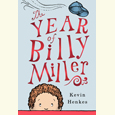Same War, Same General
Connor Towne O’Neill grapples with America’s legacy of white supremacy
In 2015, journalist Connor Towne O’Neill was on a reporting trip to Selma, Alabama, when he stumbled across some Lost Cause enthusiasts preparing to erect a bust of Nathan Bedford Forrest on the grounds of a Confederate cemetery. He didn’t know who Nathan Bedford Forrest was — understandably, since Forrest didn’t get much press in O’Neill’s hometown of Lancaster, Pennsylvania. But as a transplant to Tuscaloosa for a University of Alabama graduate program, and as a producer for NPR’s White Lies podcast, which investigated the unsolved 1965 murder of a white pastor in Selma, O’Neill found himself swimming in Confederate mythos and wondering what it was all about.

Down Along with That Devil’s Bones is O’Neill’s response to that wondering. For five years, he visited places in Alabama and Tennessee where battles still rage over Forrest monuments. He interviewed the people fighting for and against the monuments, hoping to understand the broad sweep of America’s history of white supremacy. Along the way, his reporting became a journey of introspection, as he questioned his comforting belief that a white Northerner could remain safely outside of that history. “I would come to see,” he writes, “how whiteness operated — its prerogatives and its amnesia, its symptoms and its sickness.”
O’Neill answered questions from Chapter 16 by email:
Chapter 16: You tell this story in first person, with your perspective in full view. Did you consider doing neutral-bystander reportage, or was this always going to be, in part, a memoir of personal reckoning?
Connor Towne O’Neill: It started as straight reporting. There were so many people to interview, archives to visit, books to read, battlefields to trudge through, and monuments to see. I didn’t think there would be much room for me and — maybe more damningly — that there didn’t need to be. But the more I dug into the history of Forrest and his monuments, the more I started to trace that history into the present. Forrest’s story became the lens through which I came to understand the upheaval in this country in recent years.
The debate about Forrest’s legacy threw into relief what was at stake in everything from police shootings to national anthem protests, white supremacist rallies to immigration debates. In other words, by connecting Forrest’s past to our present, I began to understand the consequences of his history. I realized that all of this, past and present, turned on questions of whiteness. Which meant that I was implicated, too. If I was going to tell Forrest’s story, I would have to reckon with my place in it. I would have to make it personal.
So while the book recounts the stories of four monuments to Forrest, it felt necessary to track the personal reckoning prompted by the people and the issues I encountered along the way. I hope that journey will be relatable and compelling for readers who, like me, are coming to see the role of race in shaping this country and their lives.
Chapter 16: You were a producer on the NPR podcast White Lies. That reporting highlighted the lies white Selmians told themselves about the crime and their collective culpability, but some interviewees came clean after decades of silence. It’s profound and stirring. Did that experience inform your approach to this book?
O’Neill: Yes, absolutely. A quarter of the book takes places in Selma, which is where White Lies is set, too. In fact, I came across the story about Forrest’s monuments while reporting in Selma for White Lies. The person who had reprinted the letter from the 60s that outlined the conspiracy theory about how Rev. Reeb died also told me a long story about a stolen statue of Forrest. So while we dug into the conspiracy theory about Reeb for the podcast, I also started looking into Forrest and his monuments. Come to think of it, every day of the last five years has been devoted, in one way or another, to running down leads that I stumbled onto that day in Selma in the spring of 2015. And, really, all those leads wind up in the same place: the work of squaring to our terrifying and violent history, confronting the lies we tell ourselves about race and white innocence.
Selma’s slogan is “From Civil War to Civil Rights and Beyond.” But, as one activist in Selma observed to me, “We haven’t gotten to the beyond yet.” Working on White Lies meant digging into civil rights history and wrestling with the lies we tell ourselves about that era. Working on Down Along with That Devil’s Bones threw me back another hundred years to trace how our inability to confront that deeper history of slavery and white supremacy keeps us from getting to the beyond.
Chapter 16: We think of the culture war over Confederate monuments and Lost Cause mythology as a Southern story. But you make the case that race obsession and delusions of innocence are American pathologies. How do you think they play into the rhetoric we’re seeing now in public discourse?
O’Neill: The Republican National Convention is taking place [as I write this], and Charlie Kirk, who grew up in a Chicago suburb, just referred to President Trump, who is from Queens, New York, as the “bodyguard of Western Civilization.” Confederates (and their latter-day acolytes) reached for that mythic “Western Civilization” too. When Jefferson Davis proclaimed, “We recognize the fact of the inferiority stamped upon that race of men by the Creator, and from the cradle to the grave, our Government, as a civil institution, marks that inferiority,” he was echoing Aristotle and his defense of slavery as natural. The rhetoric of “Western Civilization” we hear today is just a fig leaf for whiteness, same as it was for the Confederates and their Lost Cause. Then and now, upholders of white supremacy don’t just want to assert their prerogative, they want to appear to have a justification for it, threadbare and false though it is.
 Chapter 16: How did investigating Nathan Bedford Forrest’s life story and his toxic legacy help you see the ways race has shaped your consciousness?
Chapter 16: How did investigating Nathan Bedford Forrest’s life story and his toxic legacy help you see the ways race has shaped your consciousness?
O’Neill: In the stack of pamphlets that I was handed back in Selma — the one that included the letter outlining the conspiracy theory about Rev. Reeb — there was also a flier titled “Forrest Fought for You, Will You Fight for Him?” Back then, a title like that was easy enough for me to dismiss. Forrest fought for me? Yeah, right. I’m a good white liberal Yankee. But as I traced 150 years of history in four American cities, I had to grapple with the history of slavery — how catalytic it was to the American economy, North and South, and how cataclysmic it was for the people tortured physically and spiritually by it. From there, I traced its legacy — how it was violently perpetuated by systems like Jim Crow segregation, racial terror lynchings, and mass incarceration. And, on the flipside, I came to understand how the wealth generated by slavery was protected and grown: through things like the Homestead Act, redlining, FHA loans, and segregated schools.
In grappling with all of this, I came to see how my own life had moved along structures that were built by American notions of race. For most of my life, I took my whiteness for granted, but it has been the central structuring force for so much of my life. Race had a hand in where I grew up and how my parents financed that house. It had a hand in who lived next to us and thus, who I went to school with. It determined how those schools were funded and how I was seen by my teachers and administrators as I went through those schools — how I was praised and how I was punished.
Forrest fought to defend a system built on white supremacy. He lost that fight and slavery was abolished, but because the country is still drawn along those lines the Confederacy held so dear, the board is still tilted in my favor. So, yes, like it or not, Forrest fought for me.
Chapter 16: You got to know a lot of staunch Forrest defenders through their writings and in person. What did you discover about why some people crave the “palliatives” of flags and monuments?
O’Neill: American history is terrifying. The violence and devastation — physical, environmental, economic, spiritual — that undergird this country are difficult to square up to. Confederate flags and monuments, on the other hand, want us to believe that we can escape that history, that it has no hold on us, no consequence. They tell white Americans that this great country is ours by dint of our hard work and bravery and that anyone who says otherwise hates us and our freedom and anyway is probably a communist in search of a handout. That’s powerful and tempting. Americans north and south want to believe in that delusion about our past and its role in our present. You may have noticed the Confederate flags flapping at protests in Michigan and Oregon lately. But it’s still a delusion — the “Cloud-Cuckoo-Land,” as W.J. Cash called it.
Chapter 16: You use the phrase “thought monument” several times — what does it mean?
O’Neill: In a speech to the United Daughters of the Confederacy in 1904, Mary Singleton Slack urged those gathered to build, in addition to the monuments of stone and bronze proliferating across the South, “the greatest of all monuments, a thought monument.” Thought monuments embody the worldview of the Lost Cause: contented enslaved people and benevolent masters, the heroism of the Southern soldiers and purity of their women. They insist that white is right and that the old ways were better. Thought monuments discourage asking questions about the consequences of building a country on stolen land with stolen labor and shush any thought of calling in those debts.
It’s worth keeping in mind the concept of thought monuments these days. As more bronze monuments topple, will we set upon our thought monuments, too? These thought monuments have taught us to turn away from the violent inequities that provoked the Civil War and still linger with us today, visible in the deaths of Black Americans at the hands of the police and from the outbreak of COVID-19.
Chapter 16: The story starts and ends with images of empty pedestals in Selma and Memphis, pedestals once occupied and still haunted by the “same war, same general.” What do you think should rise on those vacated foundations?
O’Neill: Actually, I hope we can get away from statues in general and the “great men” theory of history that they come from. I hope we plant a tree where those statues used to stand and turn that land over to the people whose labor was stolen there.
Chapter 16: Two key scenes really stuck with me: a truth and reconciliation ceremony in a Memphis church and a desperate moment in Forrest’s young life, when he faced ruin and violence. Those scenes demonstrate, so elegantly, the dangers of turning people — or nations — into saints or devils, instead of accepting their contradictions. Do you think Americans can learn to tell a truer, fuller version of our story, and what would happen if we did?
O’Neill: Absolutely, we can. We’ve always had the capacity to do it, and we’ve always had people trying to teach us, pleading with us to be accountable to that fuller version of our history. Reconstruction asked us to tell a fuller version of our story, and it made a different country possible. One hundred years later, the civil rights movement asked us to tell a fuller version of our story in order to make a different country possible. Each time, we’ve made some progress, seen some legislative victories, but we’re still reckoning with the effects of building (and rebuilding) a nation on the foundational lie of white supremacy.
Telling that fuller story asks a great deal of white Americans. It asks us to cede opportunity, prerogative, our privileged place in a bloody hierarchy. Absolutely, we can do it. We can find a way to understand people as people, in all their complications, and provide for them as such. We can move away from a system of scarcity that perpetuates and is entangled with race. We can see that nothing about how our society is arranged is inevitable, but rather the consequence of choices we’ve made to provide for some at the expense of others. We can forge a society along lines other than consumption, extraction, hoarding. In so doing, we might find a way to not destroy the land, destroy each other, or destroy ourselves. We can. What’s happening in the streets of cities all over the country is once more a reminder of what’s possible, that every day a more just country can be born. It’s a hell of a fight, though. And we’ve only just begun. How much of our spoils are we white Americans willing to give up to provide for all? Are we willing to change? To change, we first need to know ourselves. And I think more of us are alive to the truth about our past. And that’s a good thing. But it’s only a start.

Kim Green is a Nashville writer and public radio producer, a licensed pilot and flight instructor, and the editor of PursuitMag, a magazine for private investigators.





